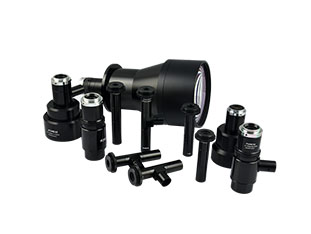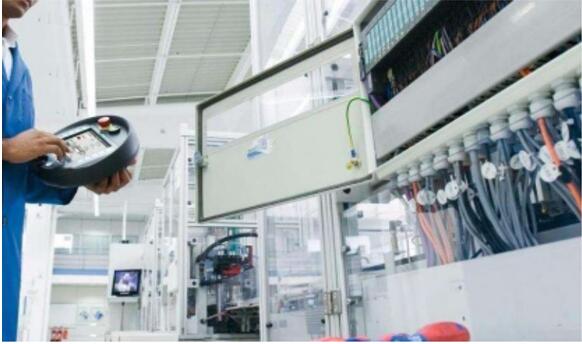Have you ever encountered this kind of trouble: under the traditional lens, a small change in the position or height of a part can lead to a “big or small” imaging size, and the measurement results are erratic? This is the inherent lens perspective error caused by the pain point. And telecentric lenses are precisely for the solution of this core problem and the birth of precision optical tools.


A、Telecentric Lens Principle
The revolutionary design of the telecentric lens lies in its unique optical path control. It ensures that the main light entering the lens is parallel to the optical axis. This is in contrast to the conical convergence or divergence of light in ordinary lenses. This “parallel light design” offers two core advantages:
① Constant magnification: The size of an object imaged on the camera sensor remains virtually constant regardless of its movement in the direction of the optical axis (Z-axis) within the depth of field.
② No perspective distortion: when the object moves perpendicular to the direction of the optical axis (XY plane), the position of its edges in the image will not be shifted, avoiding the distortion phenomenon of “near big and far small”.
It is these characteristics that make telecentric lenses an indispensable choice for high-precision dimensional measurements and microscopic observations.
B、Three Types of Telecentric Lenses
1.1 Principle of the Object-Square Telecentric Lens: The aperture diaphragm is located at the focal plane on the image side of the lens. This makes the main light from the object side after passing through the diaphragm, become parallel to the optical axis into the imaging system.
1.2 Object-side telecentric lens characteristics: insensitive to changes in the object distance (the object Z to move, the size of the image remains unchanged). But the image distance changes (such as the camera sensor position is not allowed) will lead to changes in imaging size and the field of view edge of the light angle changes.
1.3 Application of Object Telecentric Lens: Relatively rarely used in machine vision measurement alone. Commonly used in scenes that require precise control of the angle of the projected light, such as reverse engineering projection measurement, certain lighting systems.
2.1 Principle of the image-square telecentric lens: The aperture diaphragm is located at the focal plane on the object side of the lens. This makes the main light reaching the image plane (camera sensor) parallel to the optical axis.
2.2 Characteristics of an image-square telecentric lens: It is insensitive to changes in image distance (a slight shift in the position of the camera sensor does not affect the image size and the angle of the fringe light). However, changes in object distance will lead to changes in imaging size.
2.3 Advantages of Pixel Telecentric Lens: Excellent edge imaging quality. Even if the object is not in the center of the depth of field, the edge contour is still sharp and clear, without the common blurring of the edges or positional shift of ordinary lenses.
2.4 Application of Pixel Telecentric Lens: Microscopic observation, surface inspection, positioning.
3.1 Principle of the double telecentric lens: the aperture diaphragm is located in both the object and image focal planes of the lens (usually one diaphragm satisfies both conditions). This makes the object side of the main light rays parallel to the optical axis into the lens, and the image side of the main light rays parallel to the optical axis to the image plane.
3.2 Double telecentric lens features: both the object-side telecentric and image-side telecentric advantages. Insensitive to changes in both object distance and image distance, providing the ultimate in constant magnification and perspective distortion-free performance. Typically have greater depth of field.
3.3 Advantages of double telecentric lenses: Highest precision, greatest depth of field, best image stability.
3.4 Double telecentric lens applications: high precision dimensional measurements.
C、Advantages of Telecentric Lenses
① Eliminates perspective errors and realizes highly accurate and repeatable dimensional measurements.
② Provides constant magnification to simplify calibration and measurement algorithms.
③ Square telecenters provide excellent edge imaging quality.
④ Dual telecenters provide large depth of field to accommodate objects of different heights.
⑤ Insensitive to small changes in object position or camera position (dual telecenters).
D、Telecentric Lens Limitations:
① Usually larger and heavier than ordinary industrial lenses with the same focal length.
② Complex design and manufacture, the price is significantly higher than ordinary lenses.
③ After selecting the lens, the working distance range is relatively fixed, not as flexible as the ordinary lens varifocal range.
④ Its parallel optical path design usually requires a longer physical length and sufficient working distance space.
Product recommendation
TECHNICAL SOLUTION
MORE+You may also be interested in the following information
FREE CONSULTING SERVICE
Let’s help you to find the right solution for your project!


 ASK POMEAS
ASK POMEAS  PRICE INQUIRY
PRICE INQUIRY  REQUEST DEMO/TEST
REQUEST DEMO/TEST  FREE TRIAL UNIT
FREE TRIAL UNIT  ACCURATE SELECTION
ACCURATE SELECTION  ADDRESS
ADDRESS Tel:+ 86-0769-2266 0867
Tel:+ 86-0769-2266 0867 Fax:+ 86-0769-2266 0867
Fax:+ 86-0769-2266 0867 E-mail:marketing@pomeas.com
E-mail:marketing@pomeas.com
